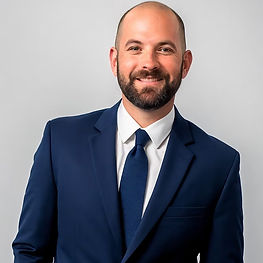Substance Abuse in the Construction Industry
- Mar 2, 2022
- 7 min read
Updated: Sep 26

Working in construction can be incredibly demanding, and it's a field where the risk of substance abuse is much higher than in other industries. We've compiled the key information you need to understand this serious issue, from the underlying causes to available resources and legal protections for workers. We have all the details you’re looking for to navigate this sensitive topic.
Why are substance abuse rates higher in the construction industry?
Substance abuse rates are higher in the construction industry because the work is physically demanding, stressful, and often isolating. Workers may also turn to substances to cope with physical pain and mental health struggles that arise from difficult work conditions.
The statistics on substance abuse among construction workers are troubling, but understanding the reasons behind them is the first step toward finding solutions. Dive deeper to learn about the specific risks, legal protections for employees, and the resources available to get help.
The construction industry is a demanding, high-stress field. It's no wonder then that many workers in the industry turn to alcohol and other drugs to cope with the stress. According to data from the National Survey on Drug Use and Health, around 15% of all construction workers in the United States have a substance abuse disorder, compared to only 8.6% of the general population. This is a troubling statistic, and it's important for employers and employees in the construction industry to be aware of it.
Blue Collar and Substance Abuse Relation

There are a number of reasons why construction workers are more likely to suffer from substance abuse disorders than the general population. One reason is that the work can be dangerous and physically demanding. Construction workers often have to do strenuous labor in difficult conditions, and they may be exposed to hazardous materials.
This can take a toll on their mental and physical health, and it can lead to stress and anxiety. Another reason for the high rate of substance abuse among construction workers is that they are often isolated from mainstream society. They work in remote locations or on construction sites that are far from town, and they often have few opportunities to socialize with people outside of their industry. This can lead to boredom and depression, which can, in turn, lead to drug and alcohol abuse.
It's important for employers in the construction industry to be aware of these risks and take steps to reduce them. They should provide their employees with a safe and healthy work environment, and they should also offer support services such as counseling and addiction treatment.
Employees in the construction industry should also be encouraged to seek help if they are struggling with substance abuse. By working together, we can make the construction industry a safer and healthier place for everyone.
The construction industry is an important part of our economy, and it employs millions of people across the country. However, we cannot ignore the fact that many of these workers are suffering from substance abuse disorders. We need to do more to support them, and we need to give them the resources they need to recover. With awareness and understanding, we can make a difference.
12% have an alcohol use disorder compared to 7.5% nationally
16.5% of construction workers reported heavy alcohol consumption within the past month, nearly twice the average of all full-time workers surveyed
11.6% of construction workers reported illicit drug use within the past month
14.3% of construction workers were diagnosed with a substance use disorder in the past year, more than 1 ½ times the average of all full-time workers surveyed
2.3% have a marijuana use disorder
Substance Abuse in Construction Industry: Risks of Working Under the Influence
There are many risks associated with working while under the influence of drugs or alcohol. Some of these include:
Inability to accurately complete tasks
Poor judgement and decision making
Slower reaction time
Falling asleep on the job
Having an accident due to lack of focus or coordination
Unsafe work practices
Getting injured or killed on the job
These are just a few of the risks associated with substance abuse while working. The consequences can be tragic, not only for the individual worker but also for their families and coworkers. It is important for employers to be aware of the signs of drug and alcohol abuse in their workers, and to have a policy in place for dealing with these issues.
Employees should also be aware of the risks associated with working while under the influence, and know what resources are available to them if they need help. The construction industry is one of the most dangerous industries to work in, and substance abuse can make it even more dangerous.

Keeping Your Job While in Treatment
The Americans with Disabilities Act (ADA) and the Family Medical Leave Act (FMLA) offer some job protections for workers in treatment for substance abuse disorders, but there are limits. The ADA prohibits discrimination against employees with disabilities and requires employers to make reasonable accommodations for them.
FMLA provides up to 12 weeks of unpaid leave for employees to deal with their own serious health condition or to care for a family member with a serious health condition. But an employee's job is not necessarily protected if they take leave under the FMLA—it depends on the employer's policies.
Short-term disability insurance is another option for workers in treatment for substance abuse disorders. Many employers offer this benefit, and it can provide income replacement during the time a worker is unable to work because of their illness. But not all employers offer short-term disability insurance, and even if they do, coverage may be limited.
Employee Assistant Programs (EAPs) are confidential and provide a variety of services, including counseling and referrals for treatment. What is said in a meeting with your EAP will stay confidential, and they could assist you in finding a treatment center that may be able to fit your needs.
Ultimately, whether or not a worker in treatment for a substance abuse disorder can keep their job will depend on their employer's policies and practices. It's important for employees to know their rights and what protections are available to them. Doing the research is crucial.
Available Resources
If you find yourself struggling while working in the field, know that you are not alone. There are many resources available to help those in your situation. The following is a list of just some of the organizations that may be able to offer assistance:
The National Association of Social Workers (NASW)
The American Counseling Association (ACA)
The American Psychological Association (APA)
The National Board for Certified Counselors (NBCC)
The National Suicide Prevention Lifeline (800-273-TALK)
If you are struggling, please reach out to one of these organizations or another professional organization for help. You are not alone in this. We all need help at times and there is no shame in seeking assistance from those who are trained to help. Remember, you are not alone.
If you or someone you know is in a crisis, please reach out for help. These resources can provide support and assistance during difficult times. Remember, there is always help available.
Frequently Ask Questions:
• What percentage of construction workers have a substance abuse disorder?
Approximately 15% of all construction workers in the United States have a substance abuse disorder, compared to just 8.6% of the general population.
• What are the risks of working under the influence?
Working under the influence can lead to poor judgment, slower reaction times, an inability to accurately complete tasks, and can significantly increase the risk of accidents and injuries on the job.
• Are there laws that protect a construction worker's job while they are in treatment?
Yes, the Americans with Disabilities Act (ADA) and the Family and Medical Leave Act (FMLA) offer some job protections, but these can be limited depending on the employer's policies.
• What are Employee Assistance Programs (EAPs)?
EAPs are confidential programs offered by many employers that provide a variety of services, including counseling and referrals for substance abuse treatment.
• Is short-term disability insurance an option for workers in treatment?
Short-term disability insurance can be an option for income replacement while a worker is in treatment, but not all employers offer this benefit, and coverage may be limited.
Struggling with substance abuse is a heavy burden, and you don't have to carry it alone. At Chateau Health and Wellness, we understand the unique pressures of the construction industry and are committed to helping our community. Our team offers a supportive and confidential environment where you can begin your journey to recovery. We believe in providing personalized care because your path to wellness is unique. If you're ready to take the next step toward a healthier future, please don't hesitate to reach out. We're here to help, and our doors are always open. Call us today at (435) 222-5225 to start a new chapter with us.

About The Author
Austin Pederson, Executive Director of Chateau Health and Wellness
Brings over eight years of experience revolutionizing mental health and substance abuse treatment through compassionate care and innovative business strategies. Inspired by his own recovery journey, Austin has developed impactful programs tailored to individuals facing trauma and stress while fostering comprehensive support systems that prioritize holistic wellness. His empathetic leadership extends to educating and assisting families, ensuring lasting recovery for clients and their loved ones.
Danny Warner, CEO of Chateau Health and Wellness
Brings a wealth of experience in business operations, strategic alliances, and turnaround management, with prior leadership roles at Mediconnect Global, Klever Marketing, and WO Investing, Inc. A graduate of Brigham Young University in Economics and History, Danny has a proven track record of delivering results across diverse industries. His most transformative role, however, was as a trail walker and counselor for troubled teens at the Anasazi Foundation, where he directly impacted young lives, a personal commitment to transformation that now drives his leadership at Chateau.
Ben Pearson, LCSW - Clinical Director
With 19 years of experience, Ben Pearson specializes in adolescent and family therapy, de-escalation, and high-risk interventions. As a former Clinical Director of an intensive outpatient program, he played a key role in clinical interventions and group therapy. With 15+ years in wilderness treatment and over a decade as a clinician, Ben has helped countless individuals and families navigate mental health and recovery challenges.










